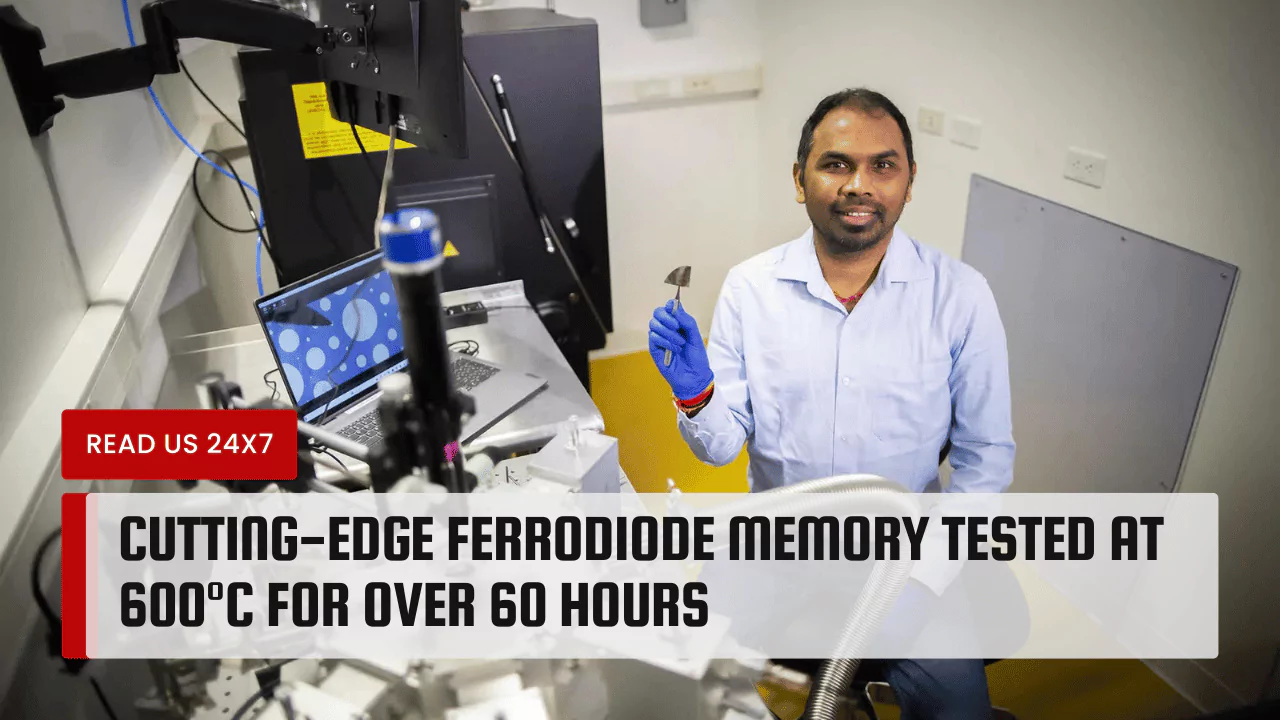Researchers at the University of Pennsylvania have recently achieved a groundbreaking feat in memory technology, demonstrating a new type of memory capable of operating at an astounding 600°C for over 60 hours. This remarkable achievement opens up new possibilities for high-temperature computing applications, from deep-Earth drilling to space exploration.
Upcoming Memory Solution for Servers
The innovative memory technology showcased by the University of Pennsylvania researchers utilizes non-volatile ferroelectric diode (ferrodiode) memory. Unlike conventional memory solutions, ferrodiode memory employs a thin layer of synthesized AIScN (I0.68Sc0.32N), offering exceptional heat resistance and durability. This modified material layer enables the memory to retain electric states even after the removal of an external electric field.
Advantages of Next-Gen Server Memory
Operating at extreme temperatures up to 600°C, ferrodiode memory presents a significant advancement in memory technology. Its ability to withstand high temperatures makes it ideal for deployment in harsh environments where traditional memory solutions would fail. This includes applications such as deep-sea exploration, aerospace systems, and industrial processes where extreme heat is a constant challenge.
Moreover, the superior heat resistance of ferrodiode memory translates to higher efficiency and performance in extreme conditions. By eliminating the need for cooling systems to maintain optimal operating temperatures, ferrodiode memory reduces energy consumption and enhances overall system reliability. This increased resilience to heat also minimizes the risk of data loss or system failure in challenging environments.
The introduction of ferrodiode memory could potentially revolutionize server technology by enabling the development of more robust and efficient systems tailored for extreme operating conditions. With the ability to maintain optimal performance in high-temperature environments, next-gen server memory solutions could facilitate advancements in fields such as scientific research, industrial automation, and defense applications.
Challenges and Limitations
While the promise of ferrodiode memory is undeniable, its widespread adoption may face challenges and limitations. One potential hurdle is the cost associated with implementing this new memory solution. Developing and manufacturing ferrodiode memory devices with the required heat resistance and performance characteristics may require significant investment, which could impact the affordability of these technologies.
Additionally, compatibility with existing server systems may pose a challenge. Integrating ferrodiode memory into current server architectures may require modifications or upgrades to ensure seamless operation. Compatibility issues could potentially slow down the adoption of this cutting-edge technology, particularly in industries where legacy systems are prevalent.
Despite these challenges, the potential benefits of ferrodiode memory for high-temperature computing applications are considerable. As researchers continue to refine and optimize this innovative memory technology, we can expect to see increased interest and investment in next-gen server memory solutions capable of operating in extreme environments.



